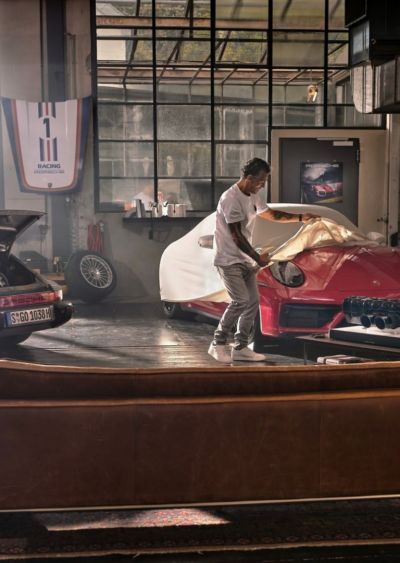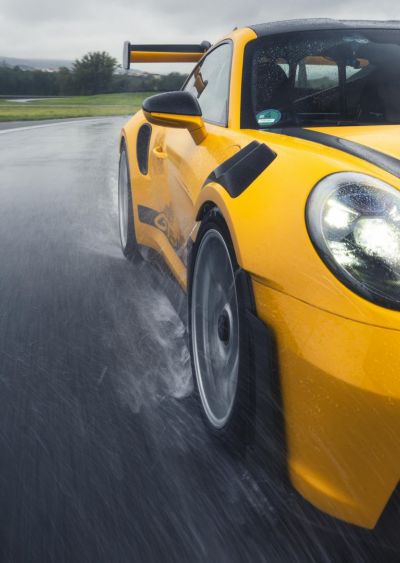Porsche Classic now offers magnesium crankcases from the factory for classic 911 models built between 1968 and 1976.
The reissue is for vehicles of the F and G series with 2.0, 2.2, 2.4 and 2.7 litre engines. These include the legendary 911 Carrera RS 2.7, which turned 50 last year. Now it is possible to order the crankcases as original parts from any Porsche Classic partner or from Porsche Centres worldwide. Until now, repairs for these parts have either had to involve trying to weld minor cracks or resorting to re-using secondhand parts from old engines. The crankcase is the part of the engine in which the crankshaft moves.
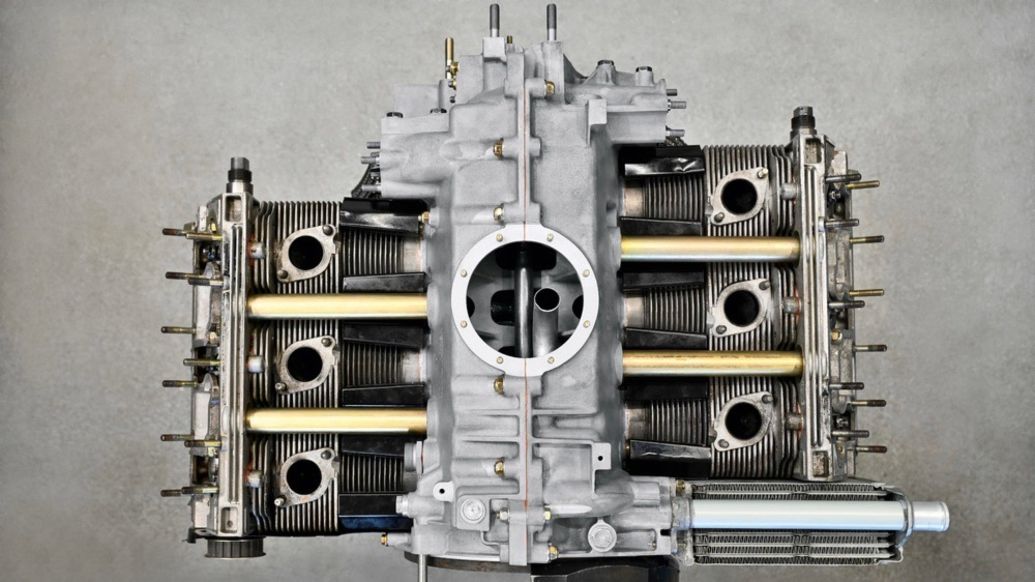
“This reissue closes another gap in our range of spare parts, making it possible to build completely new engines for most classic 911 models,” says Ulrike Lutz, Director of Porsche Classic. “There’s a lot of demand from our customers for true-to-original engine components like this.” Porsche Classic is already working on replicas of crankcases for other generations of the 911.
For the past two years, aluminium crankcases have been available again for larger-engined 911 models from the 1990s. For production, blanks were taken from the stock. The data set required for machining them was obtained by reproducing the Group C racing engine of the Porsche 962. The old engine drawings with production-related data were not entirely decipherable. The Porsche Classic experts also sifted through parts lists and technical information in the company archive and interviewed former and current staff about design details. The reissued magnesium component now also benefits from these data sets for the aluminium crankcases.
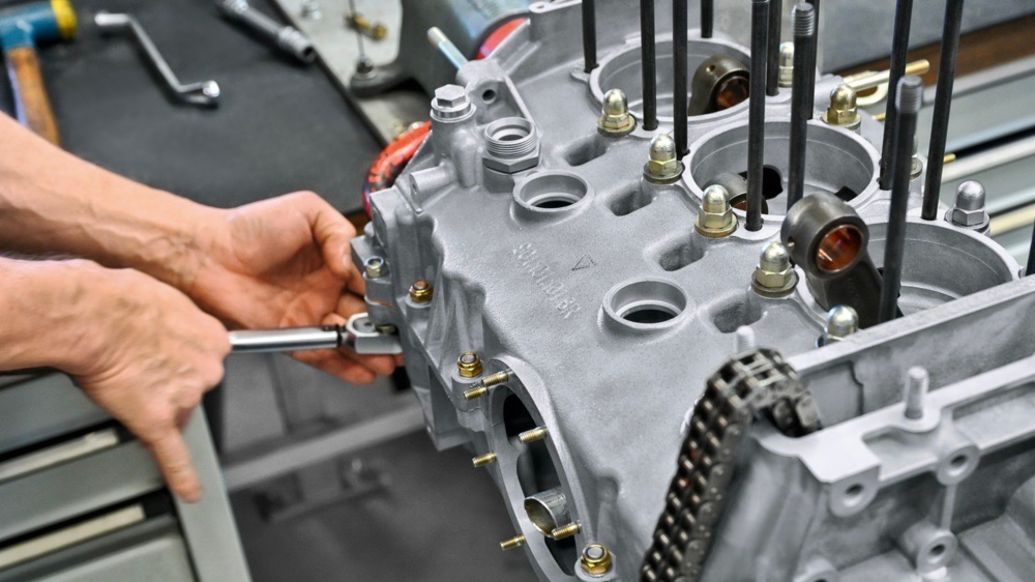
In the case of such replicas, Porsche Classic bases its work on the latest and most mature version of the series production part at the time. All crankcases bear a blank number that indicates this design version. The replicas are also marked with the purchase part number.
Modern production under strict quality specifications
Based on the CAD data, a supplier casts the crankcase using the sand casting method. First, the appropriate moulds are produced in a plant and the cores are made from sand bonded with resin. After casting, these cores are destroyed to free up the cast part.
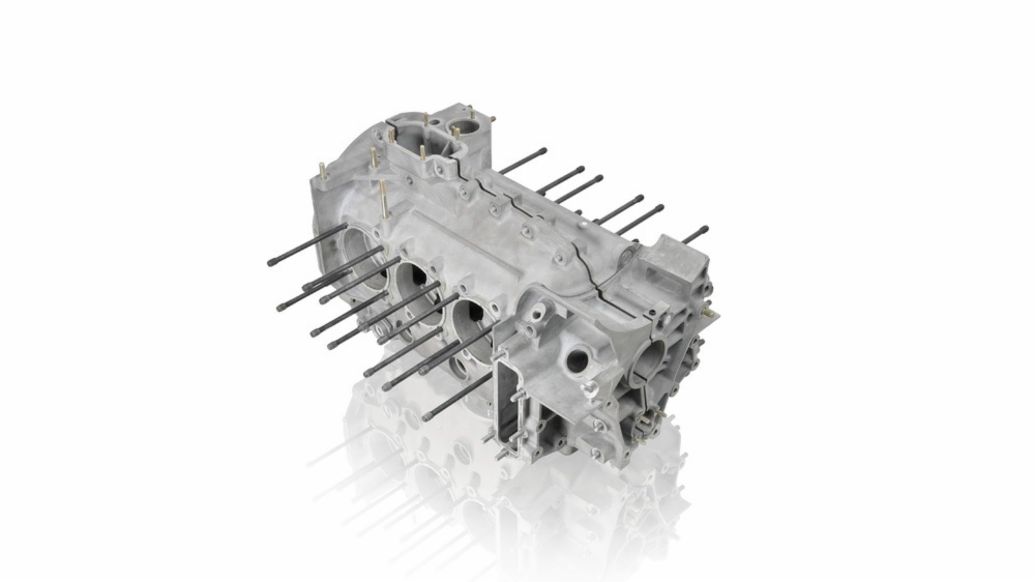
The blanks are then machined on a five-axis CNC machine. More than 50 different cutting, drilling and milling tools are used. Very little material is removed. For the milled surfaces, for example, it is only about three to four hundredths of a millimetre.
Series production is accompanied by extensive quality control. The machined housings are measured individually using 3D measuring probes. A comparison with the machining data is also made on a 3D coordinate measuring machine. The full measurement includes over 1,300 control dimensions.
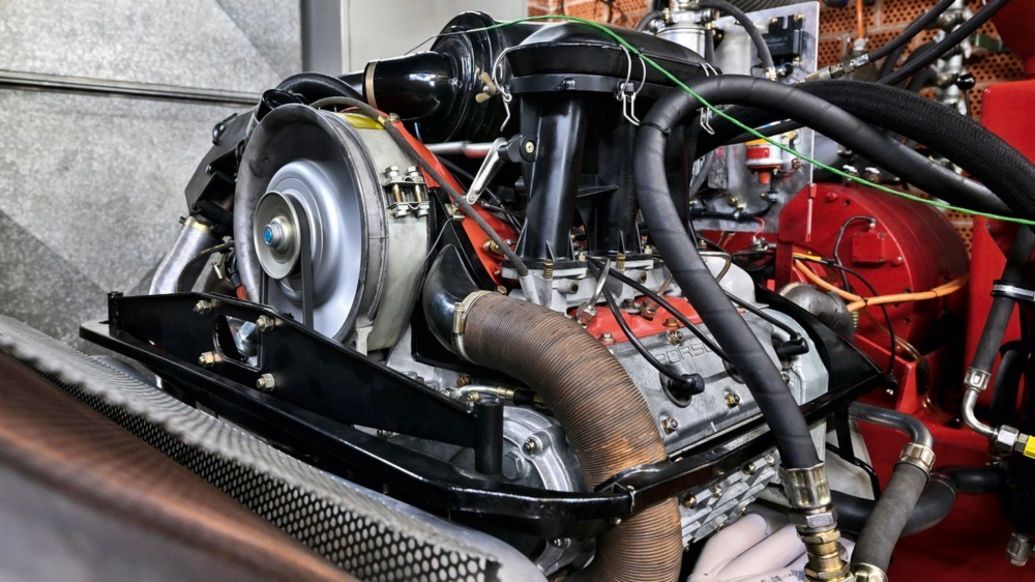
For component approval in accordance with the strict Porsche Classic quality specifications, a prototype engine also underwent an extensive test bench run lasting several weeks. To do this, Porsche Classic used the most powerful derivative of the time, the 2.7 litre engine of the 911 Carrera RS 2.7, and fitted it with multiple measuring sensors. The test programme included endurance runs with precisely defined load conditions and different engine speeds. Numerous tests were conducted in the meantime. For example, the materials experts took oil samples and analysed them for suspended particles and foreign substances. After the test runs, the prototype engine was disassembled down to the last bolt by Porsche Classic experts together with specialists from Weissach. Every single part was inspected. Special attention was naturally paid to the two crankcase halves. After complete disassembly, these were again separately inspected and examined at the Porsche Development Centre in Weissach. Here, testing and measuring methods were applied similar to those also used for series components for production release.
More than 80,000 original parts for classic cars can be ordered worldwide
Ensuring that Porsche Classic is able to supply the many classic Porsche vehicles with as comprehensive a range of spare parts as possible is the job of the Original Parts and Accessories business unit. More than 80,000 different spare parts and accessories can be ordered from any Porsche Centre worldwide. In addition to sales, Porsche Classic is also responsible for reissuing original parts that are out of stock. Some 200 spare parts have been reissued each year since 2013. Technical literature is also available: more than 1,000 operating and instruction manuals, repair guides and the ‘Types, Dimensions, Tolerances’ (TyMaTo) brochure can be obtained from Porsche Classic.
Porsche Classic has also tapped into the “Performance Parts” segment. The objective here is to increase the performance and agility of the vehicles or prepare them for use on the track. This includes popular parts like the performance steering wheels and renowned Fuchs® rims, which are now available for newer vehicles like the Porsche 911 (996 generation) as well. One example of new and coming product developments is the performance suspensions for the 996 generation of the 911 and the Porsche 959. They will be developed in close collaboration with Manthey Racing.
Info from Porsche NewsRoom

